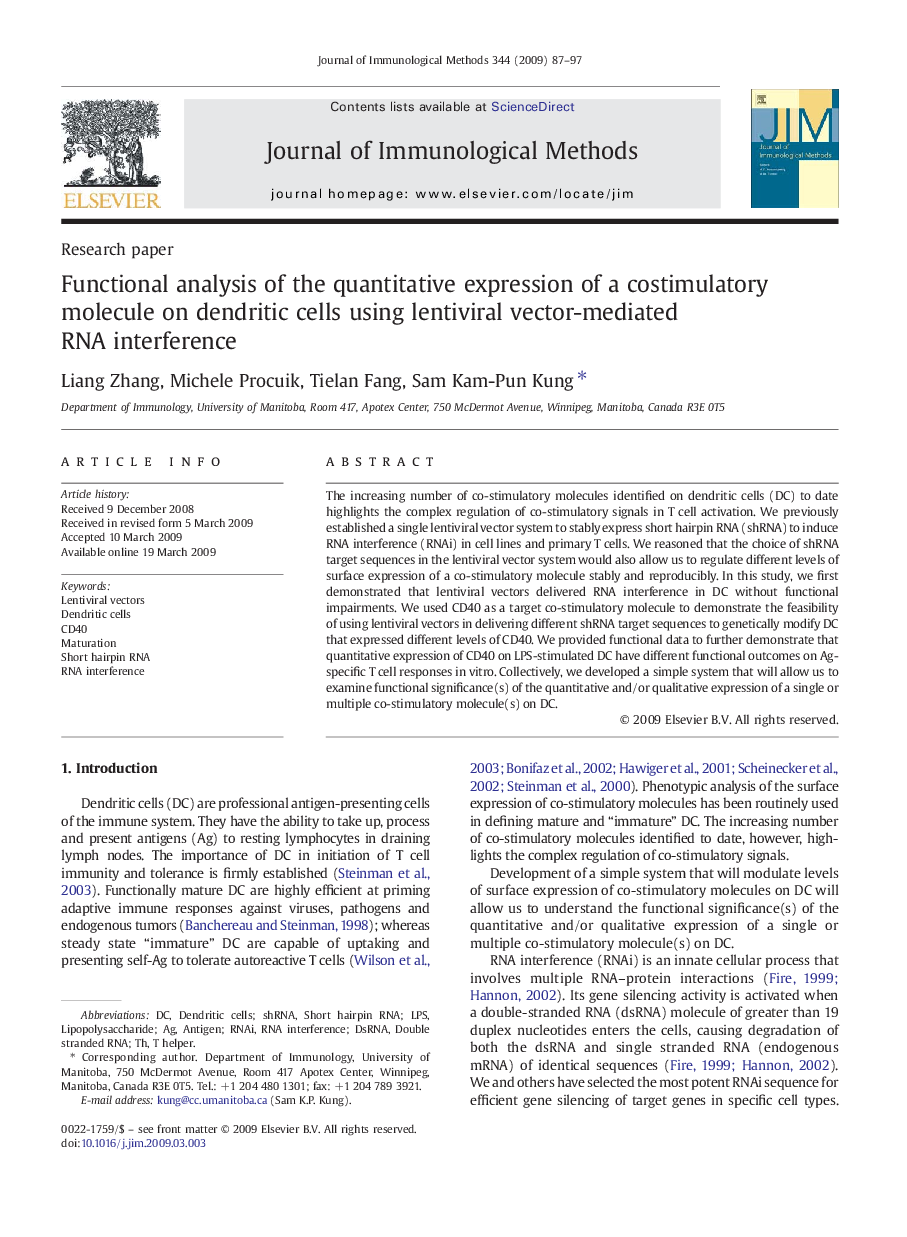| Article ID | Journal | Published Year | Pages | File Type |
|---|---|---|---|---|
| 2088791 | Journal of Immunological Methods | 2009 | 11 Pages |
The increasing number of co-stimulatory molecules identified on dendritic cells (DC) to date highlights the complex regulation of co-stimulatory signals in T cell activation. We previously established a single lentiviral vector system to stably express short hairpin RNA (shRNA) to induce RNA interference (RNAi) in cell lines and primary T cells. We reasoned that the choice of shRNA target sequences in the lentiviral vector system would also allow us to regulate different levels of surface expression of a co-stimulatory molecule stably and reproducibly. In this study, we first demonstrated that lentiviral vectors delivered RNA interference in DC without functional impairments. We used CD40 as a target co-stimulatory molecule to demonstrate the feasibility of using lentiviral vectors in delivering different shRNA target sequences to genetically modify DC that expressed different levels of CD40. We provided functional data to further demonstrate that quantitative expression of CD40 on LPS-stimulated DC have different functional outcomes on Ag-specific T cell responses in vitro. Collectively, we developed a simple system that will allow us to examine functional significance(s) of the quantitative and/or qualitative expression of a single or multiple co-stimulatory molecule(s) on DC.
